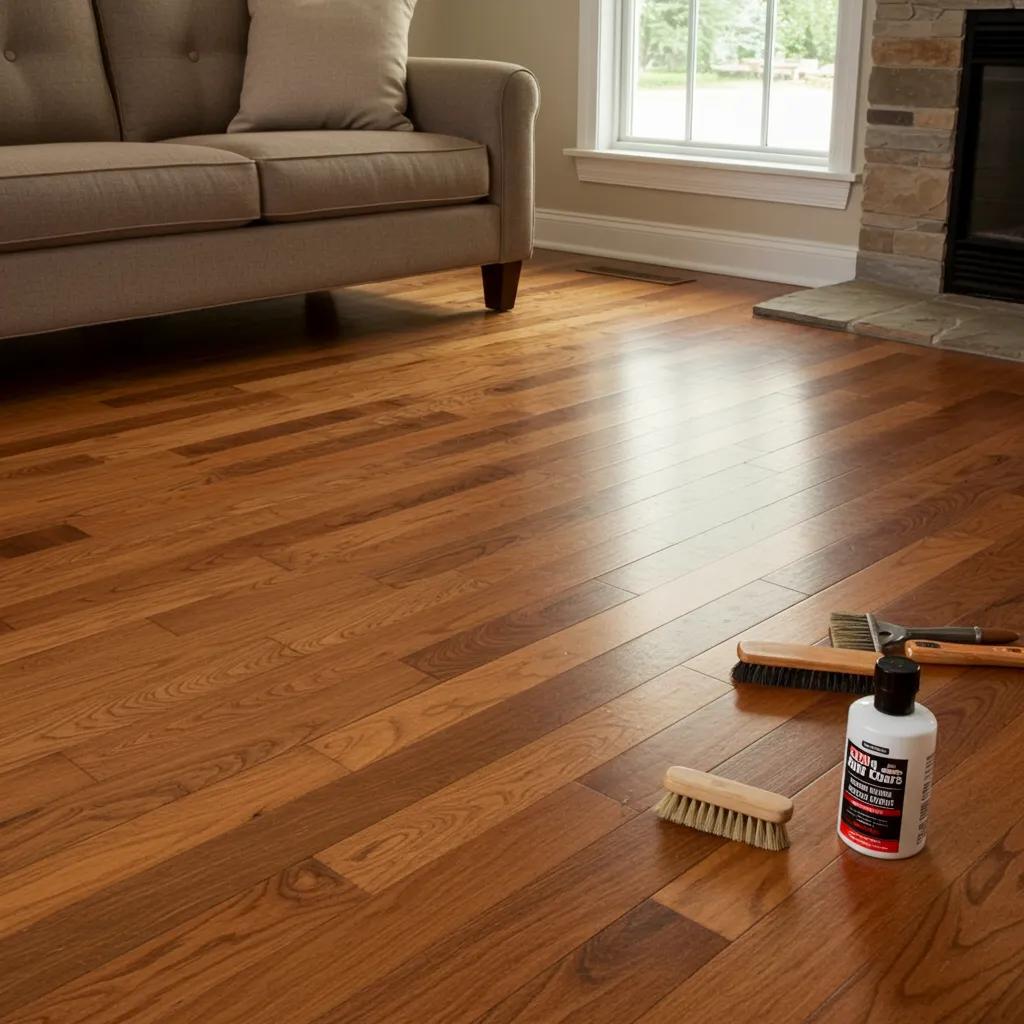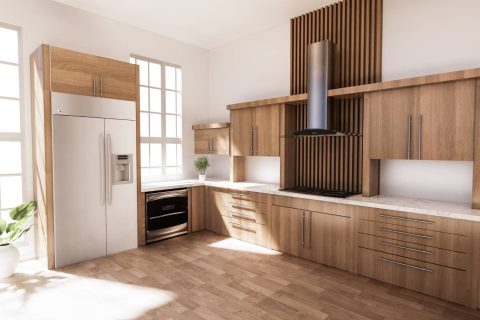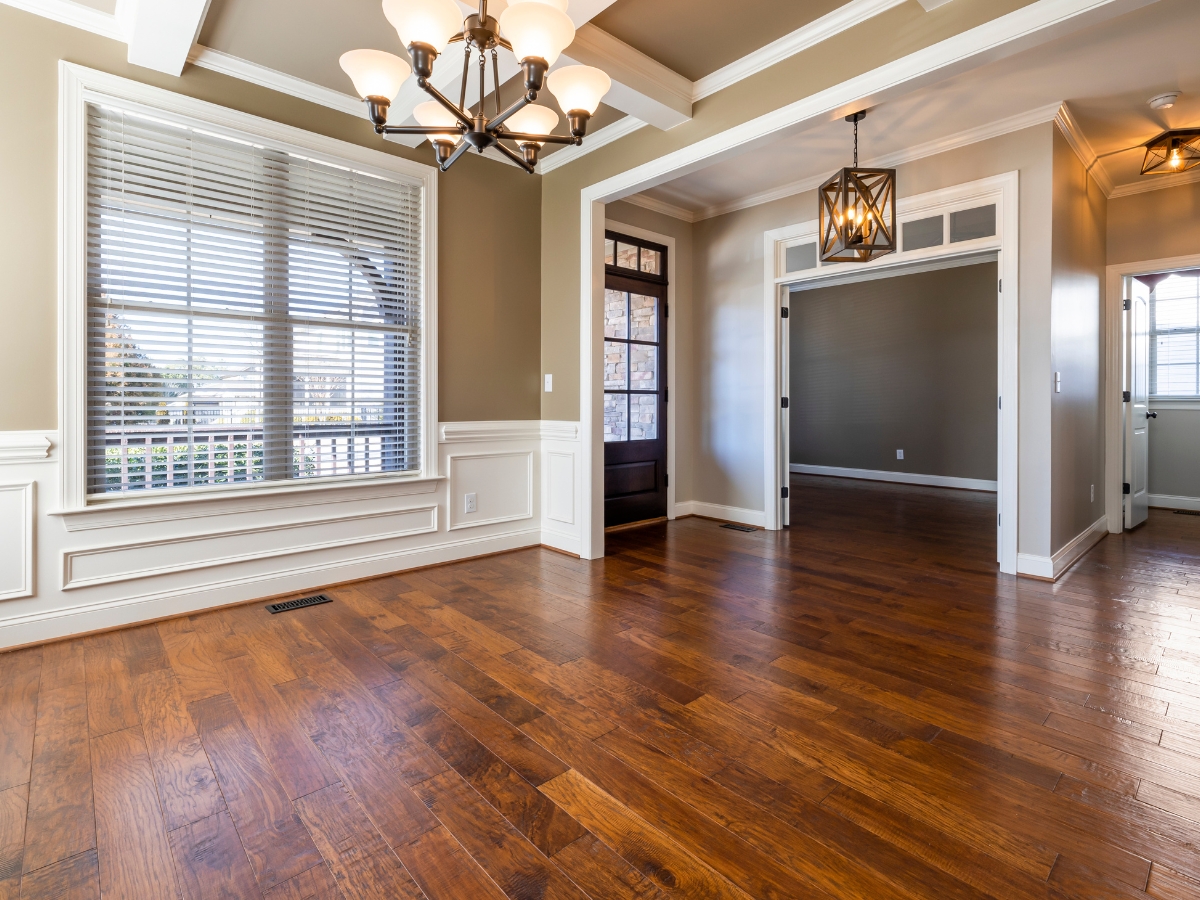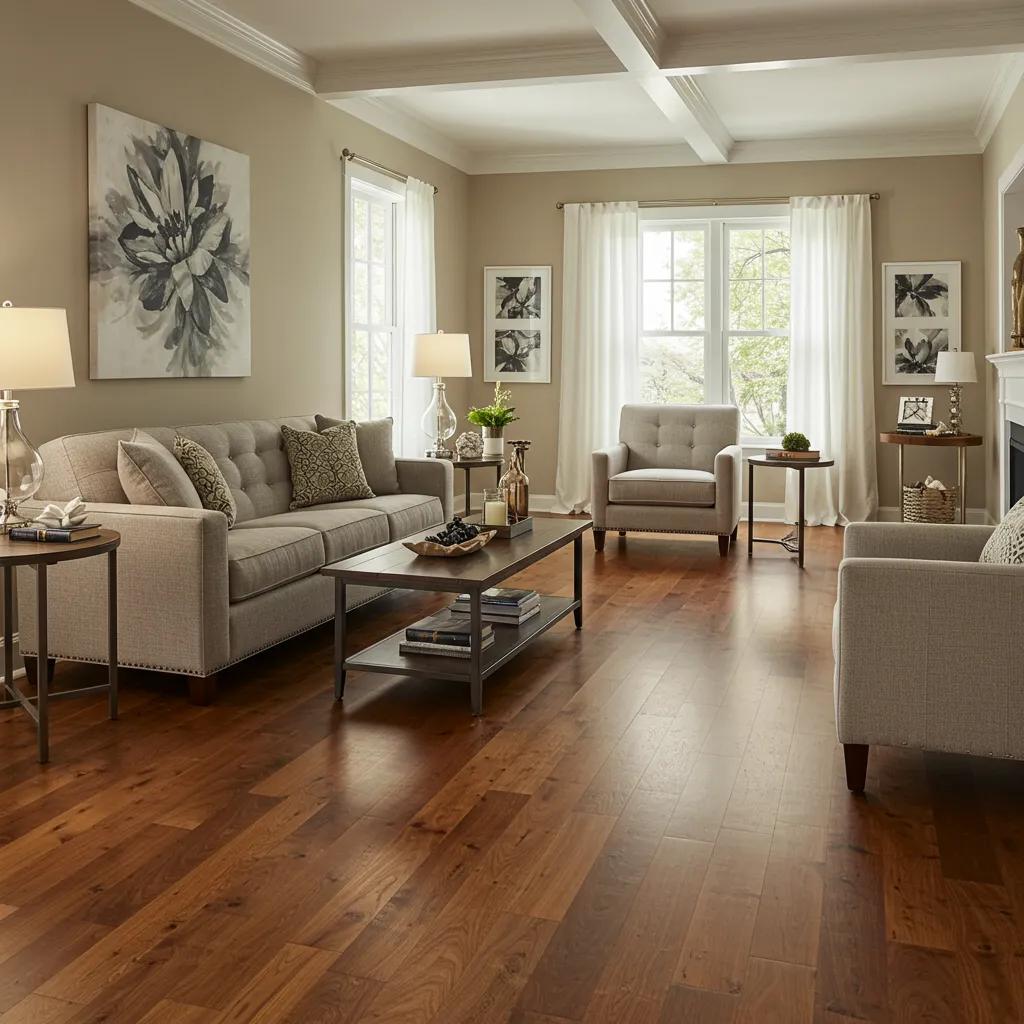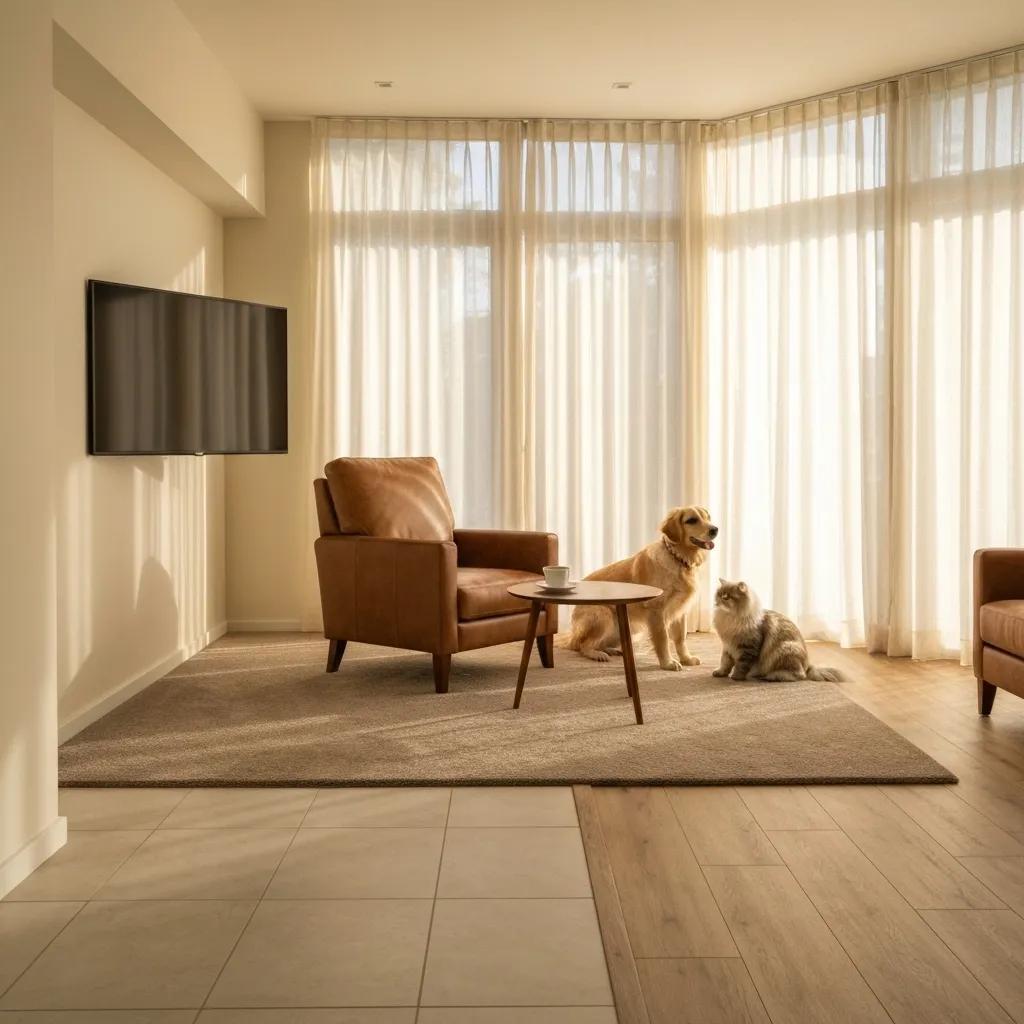That persistent squeak in your wood floor is more than just an annoyance—it’s often a sign of shifting subfloors, loose boards, or changes in humidity, common in Kennesaw’s climate. Fortunately, you can often silence those creaks for good without the expense and disruption of a full floor replacement. In this guide, we’ll walk you through proven, non-invasive methods on how to fix squeaky wood floors—from using specialized screws and lubricants to reinforcing joists from below—so you can restore peace, quiet, and stability to your Kennesaw home’s flooring.
How to Fix Squeaky Wood Floors and Stop the Noise for Good
Why Do Hardwood Floors Squeak in Kennesaw Homes?
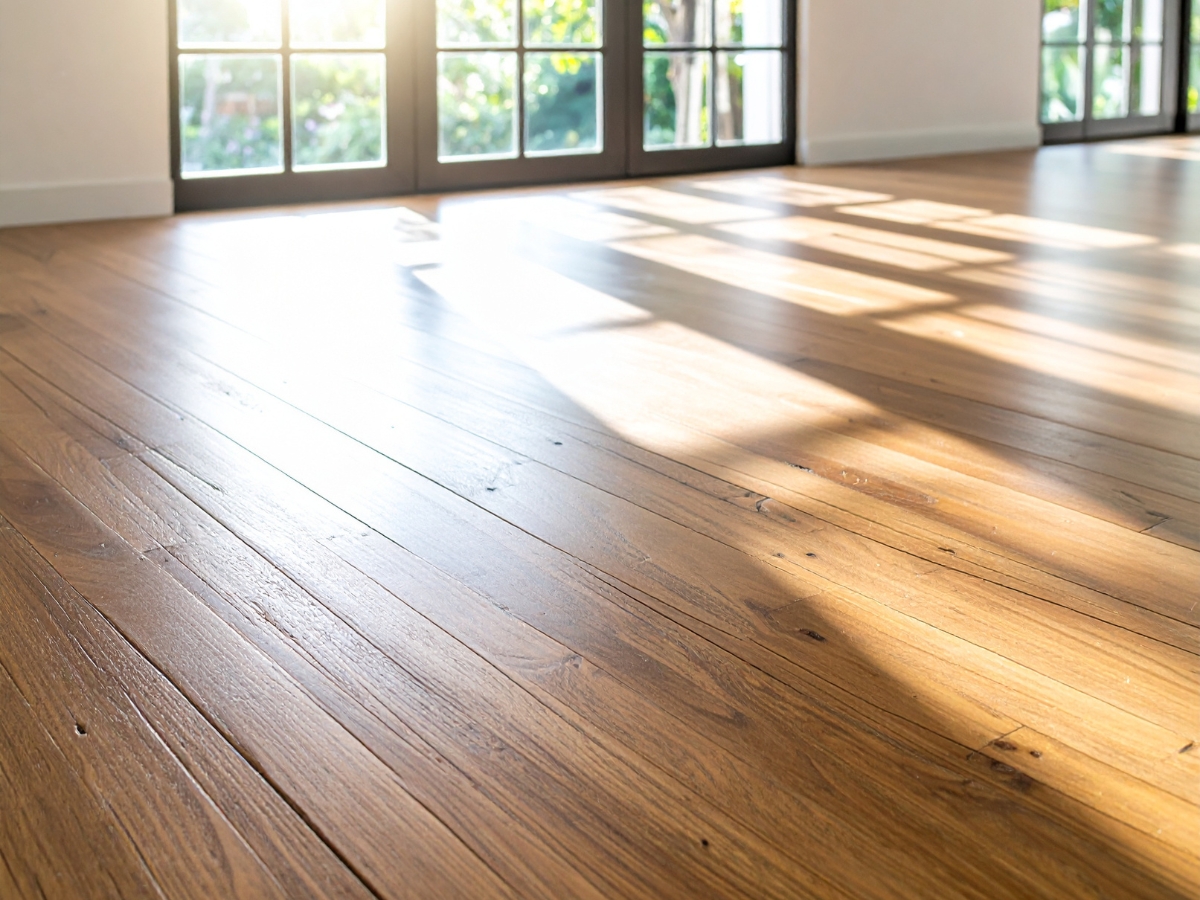
Hardwood floors in Kennesaw often develop squeaks because of the natural expansion and contraction of wood, loose subfloors or joists, and friction between boards or fasteners. The area’s changing humidity levels throughout the year cause wood to swell during humid summers and shrink during drier winters. These shifts create small gaps and movement between floor components, which result in creaks and squeaks when walked on. Recognizing the cause of these noises helps homeowners choose the right solution and avoid unnecessary replacement or damage to flooring materials.
How Does Wood Expansion and Contraction Cause Floor Squeaks?
Wood expands as it absorbs moisture and contracts as it dries. This movement can cause boards to rub against each other or against nails and trim, producing the high-pitched squeak that becomes noticeable during seasonal changes. In Kennesaw, humidity fluctuations are especially common, which makes this type of movement a frequent issue for homeowners. Maintaining consistent indoor humidity levels using a humidifier or dehumidifier can help keep the wood stable and reduce future squeaking. By controlling moisture levels, the boards stay tight and movement between them decreases, keeping floors quieter throughout the year.
What Role Do Loose Subfloors and Joists Play in Floor Creaking?
A loose subfloor or joist connection is another leading cause of squeaky wood floors. Over time, nails or screws that attach the subfloor to the joists can loosen, creating small gaps that allow movement when someone walks across the area. This movement causes the materials to flex and rub together, creating a creaking or popping sound. Identifying these weak spots can often be done by tapping along the floor or accessing the subfloor from below. Reinforcing the area with additional screws or adhesive restores the connection and stops vertical movement. Tightening these structural layers often eliminates the most persistent squeaks.
How Does Friction Between Floorboards Lead to Squeaks?
When floorboards rub against each other, the resulting friction creates a squeak that typically occurs in specific high-traffic spots. Tongue-and-groove flooring can loosen slightly over time, and uneven board edges or minor debris trapped between seams can increase the noise. Even fine dust or dried finish in gaps can make the sound worse. Applying a small amount of dry lubricant, such as powdered graphite or talc, can reduce friction where boards meet. For more severe cases, sanding or refitting the affected boards may be necessary to restore a snug, quiet fit.
Why Fixing Squeaky Wood Floors Is Worth It
Addressing squeaky floors not only restores comfort but also prevents small issues from turning into larger problems. Movement between boards or subfloors can worsen over time, loosening fasteners and putting stress on flooring materials. By identifying whether humidity changes, structural looseness, or board friction are at fault, homeowners can apply targeted fixes and extend the lifespan of their floors. A fix for squeaky wood floors doesn’t just eliminate noise—it also protects the integrity and value of your home in the long run.
What Are the Best DIY Solutions to Stop Squeaky Hardwood Floors?
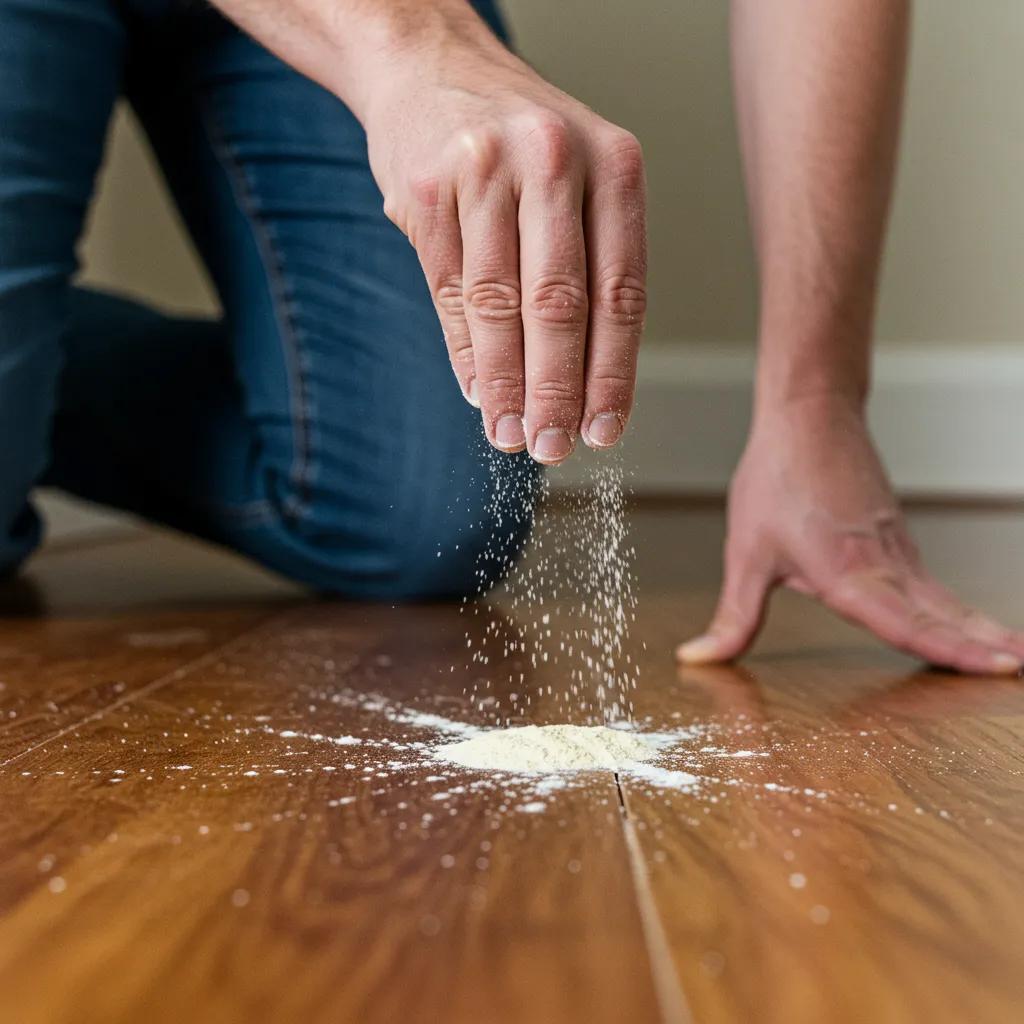
When it comes to stopping squeaky hardwood floors, the best approach is to begin with simple, low-impact fixes before moving on to structural methods. This minimizes the risk of damaging your floor’s finish or creating unnecessary work. Start with surface-level lubrication to reduce friction between boards. If that doesn’t solve the issue, try re-fastening loose boards with a discreet repair kit or hidden screws. Working in this order helps you identify the source of the squeak efficiently and choose the least invasive fix.
A good rule of thumb is to isolate the squeak first by walking across the area to find exactly where the boards move. Mark the location before attempting any repair. Many squeaks can be silenced with only minor adjustments or treatments, avoiding the need to access the floor from below.
How Can Talcum Powder and Lubricants Silence Floorboard Squeaks?
Talcum powder and powdered graphite are two of the easiest ways to fix squeaky wood floors caused by friction between boards. These materials work by filling tiny gaps and reducing the rubbing that creates noise. Clean the seams between boards, sprinkle a small amount of powder over the gap, and gently work it in using a soft brush or cloth. Wipe away any excess to prevent residue on the surface.
This method is fast, inexpensive, and completely reversible, making it ideal for mild squeaks that appear seasonally due to humidity changes. While it may not provide a permanent fix, it often delivers noticeable improvement without altering the floor’s appearance or structure.
How Do Specialized Squeak Repair Kits Work for Hardwood Floors?
Squeak repair kits are designed for homeowners who want a durable solution that doesn’t require removing flooring or accessing the subfloor. These kits use special fasteners that tighten loose boards to the subfloor while leaving a nearly invisible surface finish. The process involves drilling through a guide fixture to drive the screw into the joist or subfloor. The screw head is then snapped off or filled so the repair blends with the wood grain.
This approach is especially useful for finished hardwood floors, where preserving the visual appeal is important. It’s a reliable mid-level solution that provides long-term results without the disruption of lifting floorboards or working from underneath.
When and How Should You Use Screws to Fix Loose Floorboards?
If a squeak persists after trying surface methods, re-fastening the floorboards directly may be necessary. Using screws provides a permanent fix because it re-establishes a solid connection between the floorboards, subfloor, and joists. To do this safely, locate the joist beneath the problem area and pre-drill holes to prevent splitting. Use wood screws long enough to reach the subfloor but not so long that they penetrate below. Countersink each screw slightly and fill the holes with color-matched wood filler for a clean finish.
While this method requires a bit more effort, it provides a lasting solution for loose or shifting boards. Once completed, the area should feel stable and silent underfoot, restoring both the comfort and quality of your hardwood floor.
When Should Kennesaw Homeowners Call a Professional for Floor Squeak Repair?
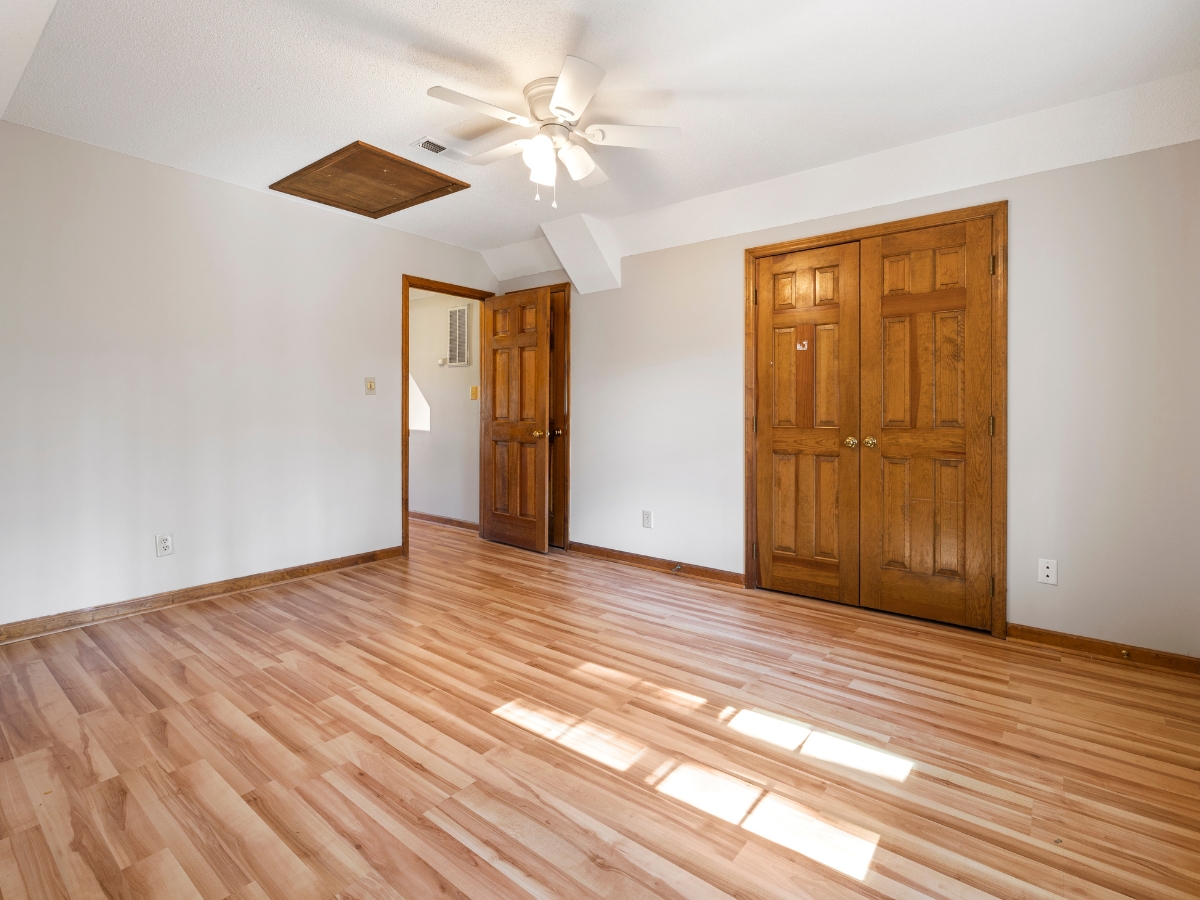
Knowing when to call a professional is key to preventing small floor issues from turning into structural problems. If you’ve tried basic DIY fixes and the squeak still persists, or if you notice sagging, visible gaps, or cracks forming in nearby walls or ceilings, it’s time to bring in an expert. These signs often point to deeper issues within the subfloor or joists that require specialized tools and experience to repair correctly.
Professional help is also necessary when you can’t access the subfloor from below, such as in homes with finished basements or slab foundations. In these situations, a flooring expert can use precision tools and above-floor repair methods that secure the boards without damaging the finish. Addressing these problems early not only eliminates noise but also protects your floor’s long-term stability and value.
What Are Signs That Squeaks Indicate Structural Damage?
While most squeaky floors are harmless, some noises can signal more serious structural issues. Warning signs include a sudden increase in noise, uneven or sagging floor areas, and cracks along walls or ceilings near the squeaky section. These symptoms suggest that the subfloor may be separating from the joists or that the joists themselves have weakened.
If you notice these conditions, avoid further DIY attempts until a professional inspects the area. A flooring or structural specialist can evaluate load-bearing components and determine if the issue stems from foundation movement, moisture intrusion, or aging materials. Early intervention helps prevent costly repairs and ensures your flooring remains both safe and sound.
How Does Limited Access Affect Your Ability to Fix Squeaky Floors Yourself?
Limited access under the floor can make DIY repairs difficult. Homes built on slab foundations or those with finished ceilings below the flooring don’t allow you to reach the joists from underneath, which is the easiest way to secure loose boards. Without that access, repairs must be done from above using specialized fasteners, repair kits, or selective board removal.
These above-floor techniques require careful handling to avoid damaging the surface or disrupting the finish. Professionals who specialize in floor repairs have the right tools to re-secure boards and subfloors cleanly. Understanding your home’s layout and access points helps you decide whether a repair is realistic to do yourself or better left to an expert.
What Are the Benefits of Professional Hardwood Floor Repair?
Hiring a professional to fix squeaky wood floors ensures a long-lasting, noise-free result. Experts identify the exact cause of movement and apply targeted solutions, whether it involves reinforcing joists, tightening subfloors, or refinishing affected boards. They also have the skill to blend any surface repairs seamlessly with your existing floor.
A professional fix goes beyond silencing noise; it restores the structural connection between your floor layers and prevents future movement. Homeowners in Kennesaw who invest in professional floor repair gain both immediate comfort and long-term protection for one of their home’s most valuable features.
How Does Diaz Hardwood Floors Repair Squeaky Wood Floors in Kennesaw?
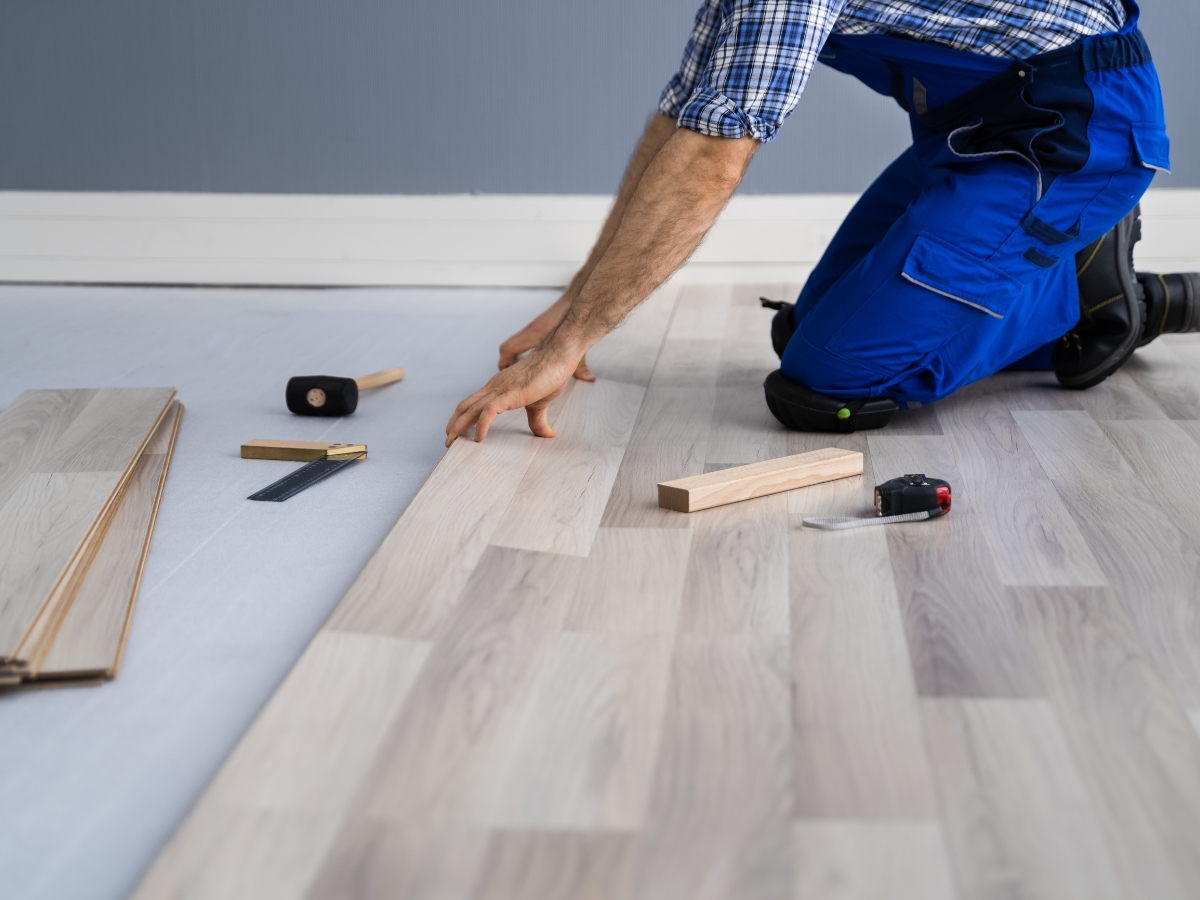
Diaz Hardwood Floors specializes in identifying and repairing squeaky wood floors throughout Kennesaw and the Metro Atlanta area. Their process focuses on pinpointing the source of the noise and applying durable, minimally invasive fixes that restore quiet without damaging the floor’s finish. The team conducts a detailed inspection that includes listening tests, checking subfloor conditions, and evaluating access points below the floor when possible. Once the assessment is complete, homeowners receive a written summary of findings, repair options, and estimated costs so they can make informed decisions.
The most common repair methods include re-fastening boards to joists, adding shims to close gaps between structural layers, installing joist bracing, or selectively replacing problem boards. Each technique is chosen based on the severity and cause of the squeak, ensuring a long-lasting repair that blends seamlessly with existing flooring.
What Is Included in Diaz Hardwood Floors’ Squeaky Floor Assessment?
A professional assessment begins with a detailed walkthrough of the affected area. The technician identifies noise points by walking across the floor and listening for variations in pitch and volume, which indicate the source of movement. When possible, the inspection continues below the floor to examine joist alignment, subfloor attachment, and any signs of moisture damage or wear.
Each issue is documented, and homeowners receive a clear explanation of recommended repairs. The assessment concludes with an estimate outlining costs and timelines, allowing for transparency and proper planning. By targeting the root cause instead of just surface symptoms, this diagnostic approach helps ensure that repairs are effective and the problem does not return.
Which Targeted Repair Techniques Does Diaz Use to Stop Floor Squeaks?
Diaz Hardwood Floors applies a range of proven methods to fix squeaky wood floors depending on the problem’s origin. Re-fastening boards to joists is the most common solution when the issue stems from loose connections. If there are small gaps between the subfloor and joist, the team inserts precision shims to stabilize the structure without removing large sections of flooring.
When noise is caused by structural shifting or damaged framing, additional joist bracing or selective board replacement may be required. Each method is performed with professional-grade fasteners and adhesives to ensure long-term stability, especially under Georgia’s changing humidity conditions. These targeted solutions minimize disruption while delivering lasting results.
How Does Diaz Ensure Long-Term Quiet Floors for Kennesaw Homes?
After the repair, Diaz Hardwood Floors takes extra steps to help homeowners maintain a quiet and stable floor over time. They offer recommendations for controlling indoor humidity, which helps prevent the expansion and contraction that often leads to squeaks. Follow-up inspections are available to verify that the repairs remain effective and to make small adjustments if needed.
By combining expert craftsmanship with preventative maintenance guidance, Diaz Hardwood Floors ensures that Kennesaw homeowners enjoy durable, noise-free floors that maintain their appearance and comfort for years to come. A well-executed repair not only eliminates sound but also strengthens the overall structure and value of the home.
How Can You Prevent Future Squeaks in Hardwood Floors?
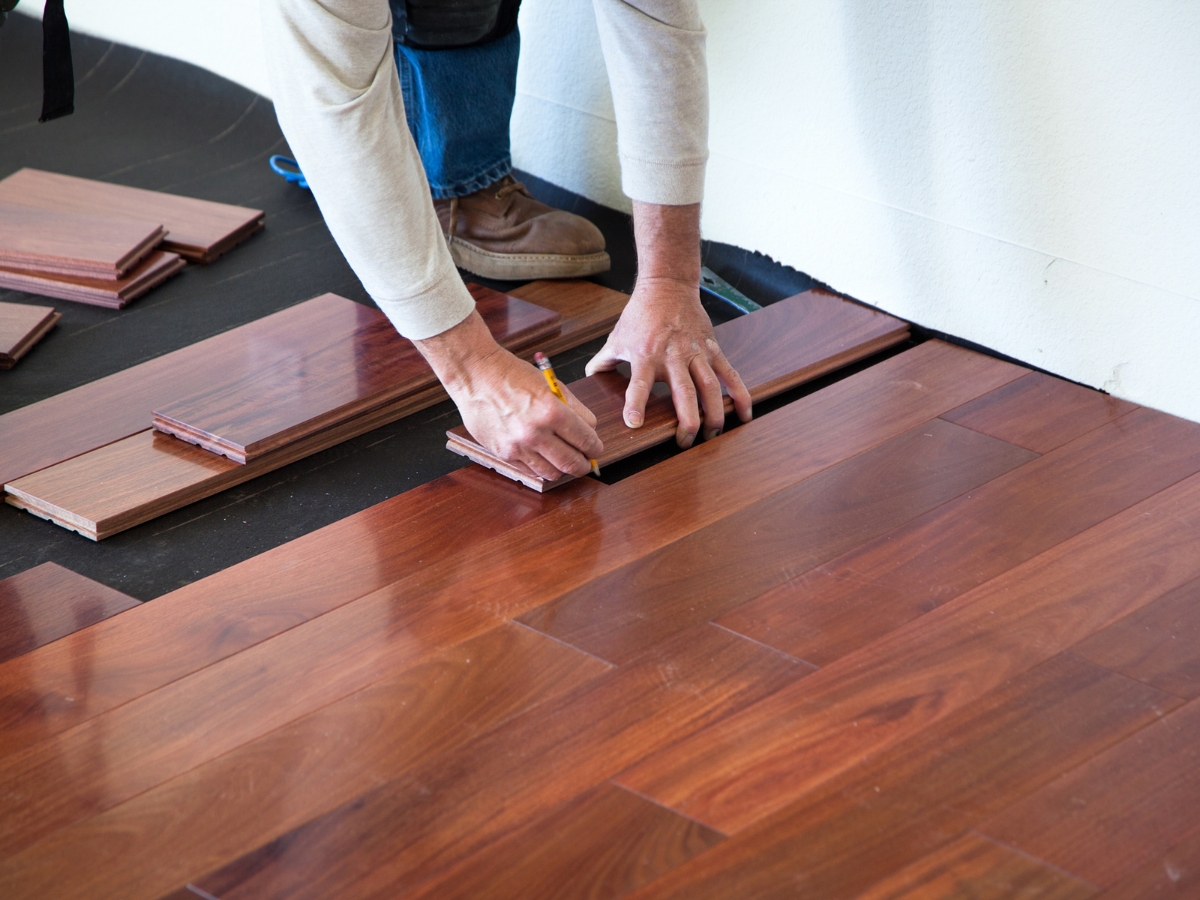
Preventing future squeaks in hardwood floors comes down to maintaining consistent environmental conditions and addressing minor issues before they turn into bigger problems. Most squeaks develop because of wood movement caused by changes in humidity or loose connections between the flooring, subfloor, and joists. By keeping indoor conditions stable and performing regular maintenance, homeowners can significantly reduce the chance of squeaks returning over time.
One of the most effective ways to prevent squeaks is to maintain consistent indoor humidity throughout the year. Hardwood naturally expands in humid conditions and contracts when the air is dry, which can loosen fasteners or create friction between boards. Keeping humidity levels between 35 and 55 percent with the help of HVAC systems, humidifiers, or dehumidifiers helps stabilize the wood’s dimensions and prevents shifting that leads to noise.
Another important factor is moisture management. Avoid using wet mops or letting water sit on the surface, as moisture can seep into seams and cause swelling, cupping, or long-term warping. Instead, clean floors with a dry or slightly damp mop and use products specifically designed for hardwood surfaces. Managing spills promptly and controlling indoor humidity keeps boards tight and stable.
Regular inspections also help stop minor issues before they become serious. Once or twice a year, check visible fasteners, trims, and transitions between rooms. If you notice any movement or gaps, tighten or re-secure them right away. These quick adjustments prevent the small separations that often spread and cause squeaks to develop. Pay particular attention to high-traffic areas, since they experience more stress and movement over time.
Finally, keeping seams and gaps clean can make a noticeable difference. Dust and debris that collect between boards can increase friction and amplify squeaks. Regular vacuuming with a soft brush attachment helps prevent this buildup and keeps seams smooth.
In summary, controlling indoor humidity, avoiding moisture exposure, tightening loose areas, and keeping seams clean all contribute to quieter, longer-lasting floors. These preventive habits are simple but effective ways to fix squeaky wood floors before the problem even starts. With consistent care, Kennesaw homeowners can maintain both the comfort and beauty of their hardwood flooring for years to come.
Frequently Asked Questions

What are the common causes of squeaky hardwood floors?
Squeaky hardwood floors can be caused by several factors, including wood expansion and contraction due to humidity changes, loose subfloor connections, and friction between floorboards. In Kennesaw, seasonal humidity fluctuations can exacerbate these issues, leading to gaps and movement that create noise. Understanding these causes is essential for homeowners to effectively address the problem and choose the right repair method.
How can I identify if my squeaky floors need professional help?
If you notice persistent squeaks after attempting DIY fixes, or if you observe signs of structural damage such as sagging floors or cracks in walls, it may be time to call a professional. Additionally, if you have limited access to the area beneath your floors, a professional can provide the necessary expertise and tools to address the issue effectively.
Are there any preventive measures to avoid future squeaks?
Yes, maintaining stable indoor humidity levels between 35-55% is crucial to prevent wood movement that leads to squeaks. Regularly inspecting and tightening visible fasteners, avoiding excess moisture, and using dry cleaning methods can also help. These preventive measures can significantly reduce the likelihood of squeaks returning and extend the life of your hardwood floors.
What tools do I need for DIY squeak repairs?
The tools required for DIY squeak repairs can vary depending on the method you choose. For basic lubrication, you’ll need talcum powder or powdered graphite, a brush, and a rag. If you opt for a squeak repair kit, you’ll need a drill and the kit components. For screw re-fastening, you’ll need screws, a drill, and countersink/filler. Always ensure you have the right tools before starting your repair project.
How long can I expect my DIY repairs to last?
The longevity of DIY repairs for squeaky floors can vary based on the method used. For instance, lubrication with talcum powder may provide temporary relief and might need reapplication seasonally. In contrast, methods like screw re-fastening or using a squeak repair kit can offer more durable solutions, potentially lasting for years if done correctly. Regular maintenance and monitoring can help extend the effectiveness of your repairs.
What should I do if my hardwood floors squeak after a professional repair?
If your hardwood floors continue to squeak after a professional repair, it’s important to contact the service provider for follow-up. They may need to reassess the situation to determine if there are underlying issues that were not addressed initially. Additionally, they can provide further recommendations or adjustments to ensure the problem is resolved effectively.
Can humidity control really make a difference in preventing squeaks?
Yes, controlling humidity is vital in preventing squeaks in hardwood floors. Wood is a natural material that expands and contracts with changes in moisture levels. By maintaining stable indoor humidity, you can minimize these fluctuations, reducing the chances of gaps forming and friction occurring between floorboards. Using humidifiers or dehumidifiers as needed can help keep your floors quiet and in good condition.
Conclusion
A squeaky wood floor doesn’t have to mean a full replacement. With the right techniques—from simple lubrication to strategic reinforcement—you can often restore peace and quiet to your Kennesaw home. For persistent or complex issues, trust the experts at Diaz Hardwood Floors. We specialize in precise, minimally invasive repairs that preserve the beauty and integrity of your flooring. Call 404-791-0444 today or send us a message through our site form for a professional assessment and let us silence those squeaks for good.

